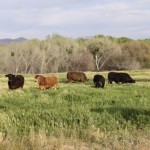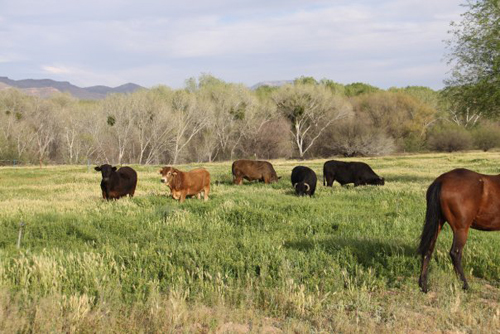(Derek and the Chow Locally gang write a bi-weekly column on eating, living, playing and everything else local. Be sure to say hi to them on Saturdays at the market.)
I have to admit, I am a hard-core ‘foodie.’ I love everything about food. I have a passion for experimenting with new tastes and flavors while cooking, discovering unknown and small family-owned restaurants, understanding where my food comes from, and ultimately learning about how my food was grown or raised.
A common theme continues to emerge as I explore everything related to food. The taste of a final dish starts with the quality of the ingredients used to prepare it. Okay, I understand that this isn’t a startling revelation. We’ve all heard famous celebrity chefs repeat that mantra on any number of cooking shows. It’s a pretty easy idea to get your head around.
Still, it’s easy to forget, especially given all the processed and convenience foods we’re surrounded with much of the time. So I try to get out of that sort of food environment to find good food. I’ve personally found that one of the best places to find an amazing assortment of high-quality ingredients is to go direct to the source: Arizona-based farmers and ranchers. Over the next few articles, I will discuss a number of incredible Arizona foods and their sources, which I feel make a substantial difference in the meals we eat and cook.
In the next article, I’ll focus on a vegetable or two, but today I want to talk about beef. Beef is the star ingredient in far too many recipes to count. Every grocery store has an aisle or section dedicated to it. An entire restaurant category, “steak houses,” lives and dies by this one ingredient. (I’m still waiting for the day when a vegetable rises to the same level of fame. Wouldn’t it be great to tell your friends, “Hey, let’s go to the Lentil House tonight!”?)
Beef comes in different cuts and grades, and we tend to understand that some beef is lower quality (and cheaper), and some beef is higher quality (and more expensive). I have found, however, that regardless of the cut or grade, I’m continually disappointed by the quality of grocery store beef. In part, that has to do with the lack of availability of grass-fed beef.
It wasn’t until I started visiting the Downtown’s Phoenix Public Market that I first tasted grass-fed beef. It tasted like nothing I had encountered before. It burst with flavor in a concentrated explosion with every bite. It seemed like I was eating real beef for the first time and everything else I ate had been an imitation.
This experience prompted me to try meat from a variety of different grass-fed producers. I was amazed to find that each producer’s beef had a very distinct taste. Even more surprising, the taste of beef from the same producer, but from different seasons or years, could differ as well. Being a wine enthusiast, this reminded me a lot of the variety of flavors one can find across wineries and production years. For instance, grape varietals, vineyards, winemakers’ practices, and each year’s weather, all can drastically affect flavor. Grass-fed beef can differ by cattle breed, grass ranges and prairies, ranchers’ practices, and each season’s weather as well. Given this, I don’t understand why there aren’t ‘Beef Tastings’ organized just like ‘Wine Tastings.’
Even more exciting is that something this tasty can be healthier, too This method of raising cattle also creates much leaner meat compared to grain-fed cattle. You will also notice a better ratio of omega-3 to omega-6 fatty acids. This all has its roots in nature, as grazing on grasses, legumes and other plants is what cows’ digestive systems are naturally adapted to.
The more I researched the topic, the more benefits I noted related to grass-fed beef. I found that it not only tastes better and is healthier, but it is better for the environment, the animal’s welfare, and the local economy when compared to its grain-fed or corn-fed counterpart. If you would like to dig deeper and learn about these issues, I recommend this great book by Michael Pollan: Omnivore Dilemma.
The only downside I have found is the increased cost. Grass-fed beef usually is more expensive than its mass-produced counterpart. This is due to a number of factors, which impact our ranchers:
1. Lack of government-subsidized feed (corn)
2. Higher land requirements (both in acres and quality)
3. Time to market (grass-fed beef takes an average of 7 months longer to bring to market)
4. Increased labor costs for optimal care, low stress, and nutrition
5. Economies of scale (grass-fed beef often comes from smaller farms compared to the industrial-produced beef from large farm corporations)
Only you can decide if choosing to buy and cook grass-fed is worth it for you, but I urge you to give it a shot at least once.
Phoenix is very lucky when it comes to grass-fed beef. We have a number of amazing producers who are raising their cattle in the right ways. I personally haven’t tried them all, but the top of my list for the ones I have tasted are; Double Check Ranch and JH Grassfed
. Both can be found at the Phoenix Public Market or ordered online via Chow Locally. If you’re not in the mood for cooking tonight, you can always find some great local grass-fed beef at The Breadfruit, Pane Bianco, or, if venturing to Scottsdale, FnB.
About the Author
 Derek Slife is Co-Founder of Chow Locally, an organization dedicated to breaking down the barriers between you and your access to healthy, sustainable, local food grown by farmers in your area. They offer a new approach to connecting local farms to local tables, via deliveries to the Phoenix Public Market. Visit Chow Locally for more.
Derek Slife is Co-Founder of Chow Locally, an organization dedicated to breaking down the barriers between you and your access to healthy, sustainable, local food grown by farmers in your area. They offer a new approach to connecting local farms to local tables, via deliveries to the Phoenix Public Market. Visit Chow Locally for more.







